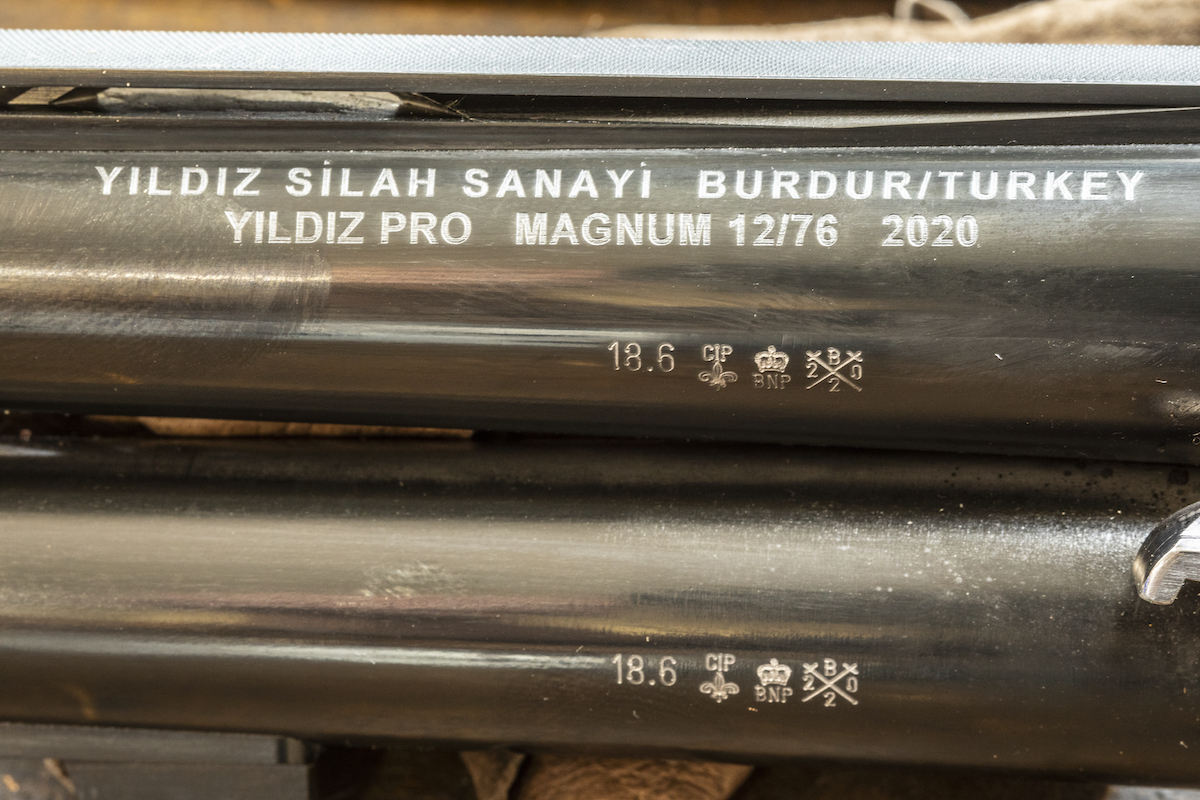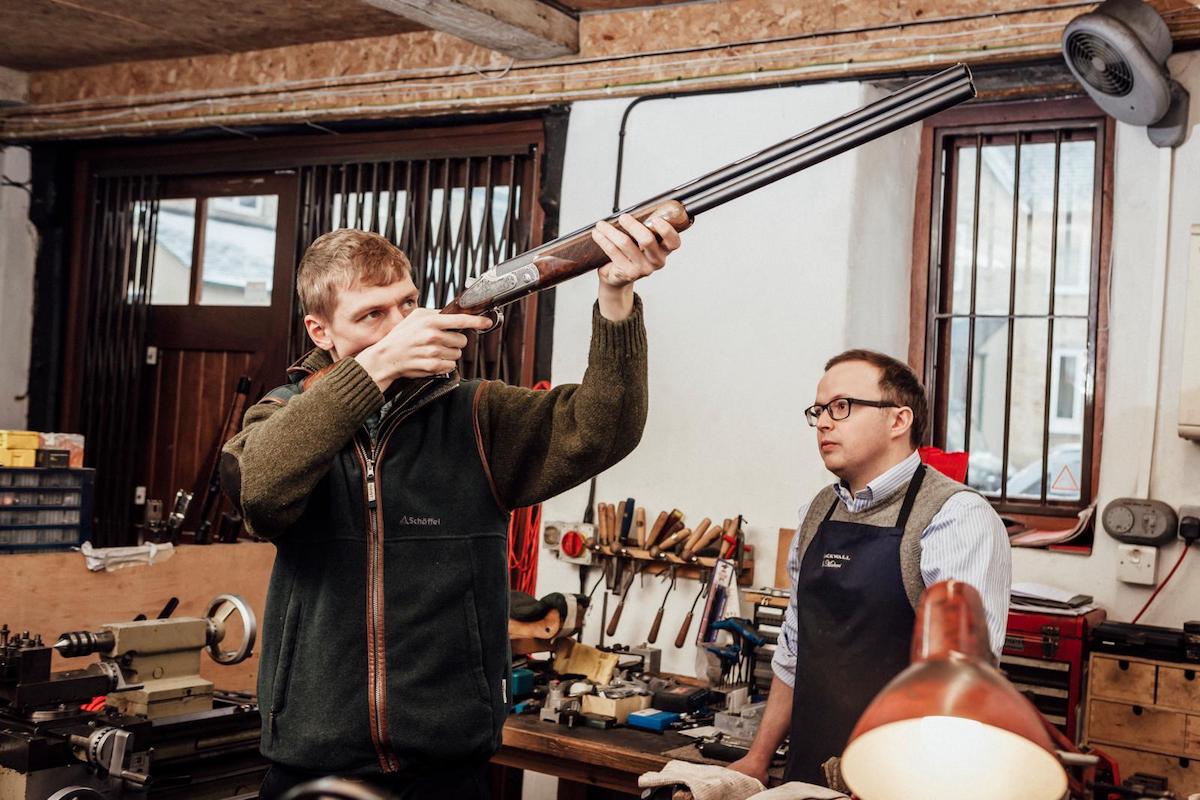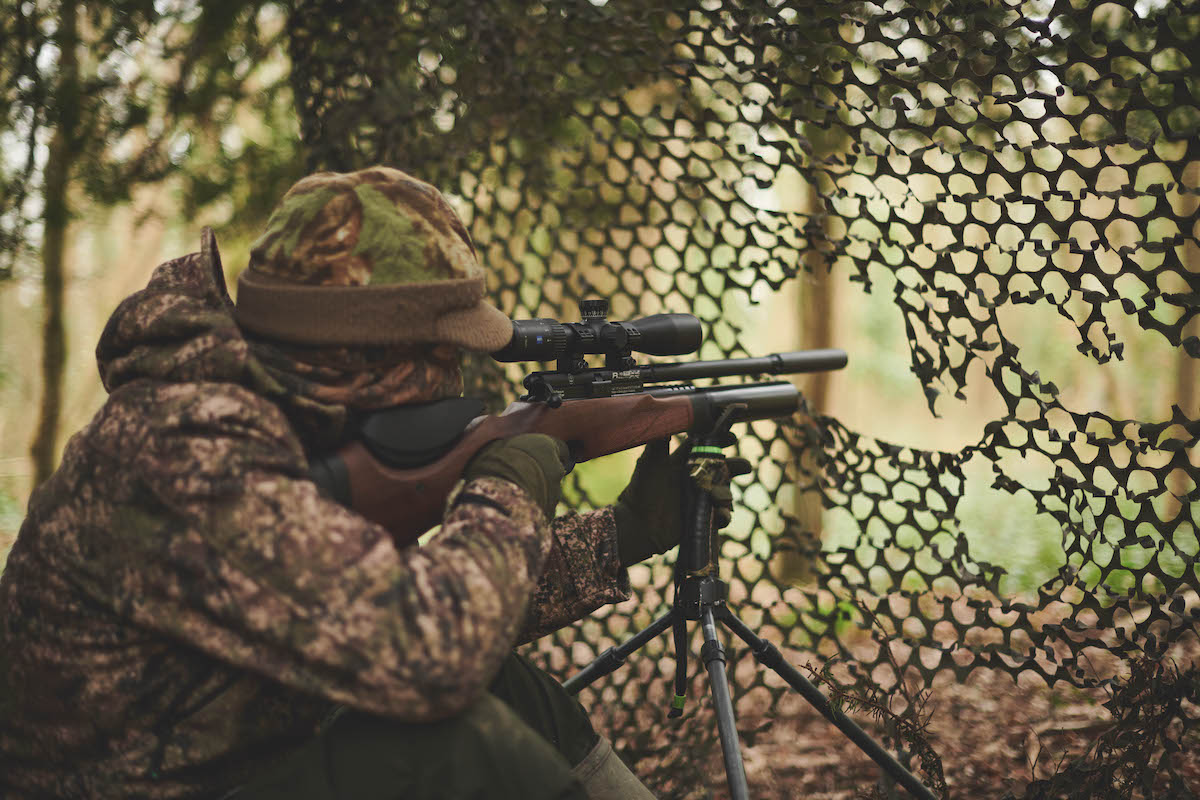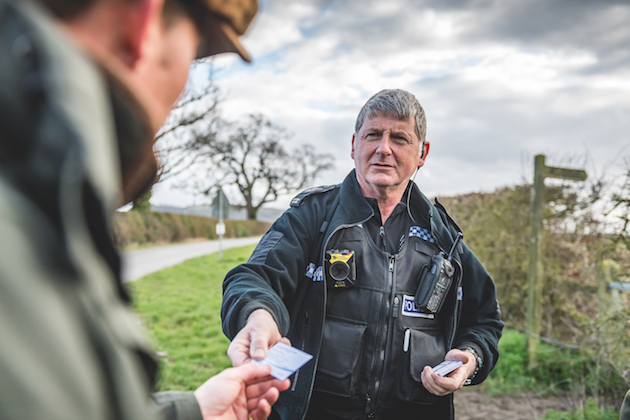Reading proof marks on guns, serial numbers and how to re-proof a gun
How to read proof marks on your gun and serial numbers

CIP and fleur-de-lis stamp on a modern gun
A frequently asked question received by Sporting Gun magazine is about proof marks on guns. Gun owners ask “how old is my gun or can I date my gun from its serial number?” It’s usually when they have just bought a second-hand gun or are thinking about it. (Read more on buying guns second-hand here.)
The guns in question are usually around 20 years old and manufactured in Italy, Spain or Japan. (Shotgun restoration – where to get it done and what to spend. )
So what’s the answer? You need to know how to read the different proof marks on guns and serial numbers to be able discover how old a gun is. (Read more on buying a gun at auction.)
Shotgun markings explained
Italy and Spain both build date codes in the proof information stamped on their guns. Miroku of Japan, who make the traditionally-styled break-action Brownings, have adopted Browning’s date coding system in their serial numbers.
Proof marks on Italian guns
The Italian alphabet contains only 21 letters, there being no k, j, w, x, or y.
Officials in the Italian proof house in Gardone Val Trompia, near Brescia, choose to miss out other letters, some for logical reasons (for instance, O and Q could easily be mistaken for zero) and others for no apparent reason (G and R, for instance). To make complete sense of thing you need a table of letters and years.
Look at an Italian-manufactured gun and you will see the letter sequences appear in a little rectangle near the proof information. Google Italian proof house date codes and you can find tables going back to 1945. For now, here are the date letter codes for the past 20 years:
1997 BI
1998 BL
1999 BM
2000BN
2001BP
2002BS
2003BT
2004 BU
2005 BZ
2006 CA
2007 CB
2008 CC
2009CD
2010 CF
2011 CH
2012 CI
2013 CL
2014 CM
2015 CN
2016 CP
2017 CS
If you pick up an Italian gun made between 1954 and 1974, the date code will be in Roman numerals, and for the immediate post-war period the code is in Arabic numerals – that is the conventional 1,2,3, etc.

Examples of Spanish proof marks
Proof marks on Spanish guns
The Spanish system, as applied by the proof house in Eibar in the Basque Country is simpler. Since 1995 a number presented in blocks of digits presents the information like this:
The first two digits identify the maker (for instance, 16 is AYA, and 13 is Lanber). The second two digits identify the type of gun, and 03 indicates a shotgun. The next sequence of digits is the manufacturer’s serial number, and the last pair of digits is the year of manufacture (for instance, 98 indicates 1998, and 05 indicates 2005).
You might also like to read how to steel proof a Spanish side-by-side.

It may be possible to get your beloved side-by-side reproofed for steel shot for a modest sum, unless it has Damascus barrels
Proof marks on Japanese shotguns
The simplest date coding of the lot is applied to Japanese-made Miroku shotguns, and the break-action guns they build for Browning. Japan does not have a gun barrel proof act, but the Miroku/Browning system is remarkable for its clarity.
Two letters at the end of the serial number indicate the year. Z=1; Y=2; X=3; W=4; V=5; T=6; R=7; P=8, N=9; and M=0. Therefore, a serial number ending in MV indicates the year 2005.

Guns have to be proofed in Britain to be sold here. Different countries have different codes
Why codes?
If we think about clear dating on guns, why do we have to have codes at all? Why can’t all countries date-mark their products in plain language? It shouldn’t be too much to ask all manufacturers to put the date of manufacture at the end of the serial number – something like 11/17 to identify the month and year of manufacturer as November 2017, for instance?
It ought to become a rule of the Commission Internationale Pour L’epreuve des Armes a Feu Portatives (CIP), which is the international organisation of proof houses. The CIP’s current membership is 14: Austria, Belgium, Chile, Czech Republic, Finland, France, Germany, Hungary, Italy, Russia, Slovakia, Spain, United Arab Emirates, and the United Kingdom.
Surprisingly, the USA has no law requiring firearms to be proofed.
Britain accepts the proof standards of all CIP member countries, but the products of all other nations have to be proofed in this country before they can be legally sold in the UK. Surely it isn’t too much to ask all of them to accept clear-language date marking, or is there a limit to just how far international co-operation will go?
Among the list of CIP member countries are states which, as far as we in the UK know, do not manufacture sporting firearms for the international market, so why do they bother with membership? It seems that a proof stamp confirming that a military weapon conforms to an international safety standard can be a good sales point.
The legalities of re-proofing a gun
To be sold legally, every cartridge firearm must bear valid proof marks. As the UK is a signatory of the International Proof Commission (CIP), it recognises the proof marks of every other member state. For example, this means that a gun with Belgian proof marks can be sold in the UK without being re-proofed because Belgium is a CIP member. However, as the US has no federated proof system and American makers conduct their own proof tests, US guns must be proofed on arrival in the UK, because the US is not a CIP member.
A gun is said to “go out of proof” if the internal dimensions of its barrel exceed certain defined original dimensions when it was proof tested. This can be caused by corrosion, wear, excessive cleaning with abrasive material, or the deliberate removal of metal, for example, when a gun is rebored.
The Proof Acts require a gun to be re-proofed if it has been “materially weakened” by repair work such as reboring or weld/brazing of the action. Equally, the screw-cutting of a barrel for a sound moderator, the installation of new screw-in chokes and fitting a muzzle-brake require a re-proof.
Guns can also be re-proofed to take different ammunition, any gun which has had its chamber lengthened must be re-proofed.
Other notes on re-proofing
- It is illegal to sell a gun which is out of proof, even in a private sale, but proof legislation is designed to protect the public, and not to save shooters from their own folly.
- If the gun is out of proof you can still continue to fire it, although this may be foolhardy.
- When a gun is re-proofed there is always some element of risk, but a gunsmith will advise you as to its chances of passing the test.
- Before sending it to the proof house he will check that the action and barrels are jointed properly, that the ribs are sound and that the bores haven’t ‘grown’ in diameter beyond laid-down limits, through either constant firing or overzealous cleaning, or both.
This article was written by the late Mike George in 2014 and has been updated.








